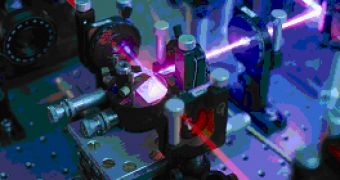Each second, vast amounts of valuable information - from your personal credit card numbers to state and military secrets - are targeted by individual hackers and crackers, or worse, by criminal organizations, but now, new technologies are emerging based on the surprising laws of quantum physics that govern the atomic scale.
These powerful techniques threaten to crack some secret codes in widespread use today and, at the same time, offer new quantum cryptographic protocols which could one day profoundly alter the way we safeguard critical information. Quantum cryptography is designed to enable two parties to exchange secret encryption keys without running the risk of them being intercepted.
This is done by encoding the digital key information in bursts of light sent over standard optical fibers and is currently only used for sending encryption keys between buildings by a hand full of major players like government departments and some banks, but these systems can only guarantee security over relatively short distances.
The challenge is to extend the range and increase the speed at which the keys can be sent so that they can be used more widely and to improve the security of the transmissions.
In fact, even though the digital keys are encoded in time delays between pulses of individual photons, which makes an attempt to intercept the signal detectable when individual photons are removed, data interception is possible, due to the fact that no commercial light source emits nothing but single photons.
So, since some pulses will consist of more than one photon, an "eavesdropper" can "steal" individual photons, without them being missed and detected.
The only way around the problem has been to reduce the probability that pulses will contain multiple photons, but, this means less distance it can travel and serious speed limitations.
Today, a new solution is brought by Toshiba Research Europe Centre, in Cambridge, UK, and it is called "decoy pulses".
These pulses are randomly interspersed within the signal and are weaker than the rest of the signal, and this means they rarely consist of more than one photon. If an eavesdropper tries blocking single photons while siphoning off multiple photons from the rest of the pulses, more of these decoy pulses will be blocked on average than will the rest of the signal. Therefore, by monitoring the proportion of signals to decoy pulses that make it through, it is possible to detect an attack. "The developments could broaden the commercial appeal of unconditionally secure quantum key distribution", says Andrew Shields, head of Toshiba Research Europe, who led the research.

 14 DAY TRIAL //
14 DAY TRIAL //